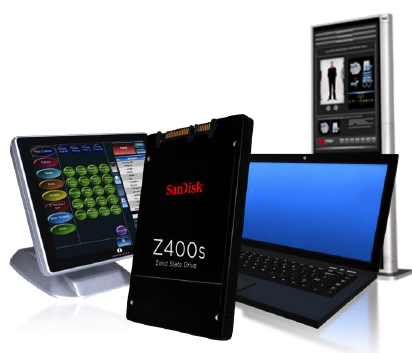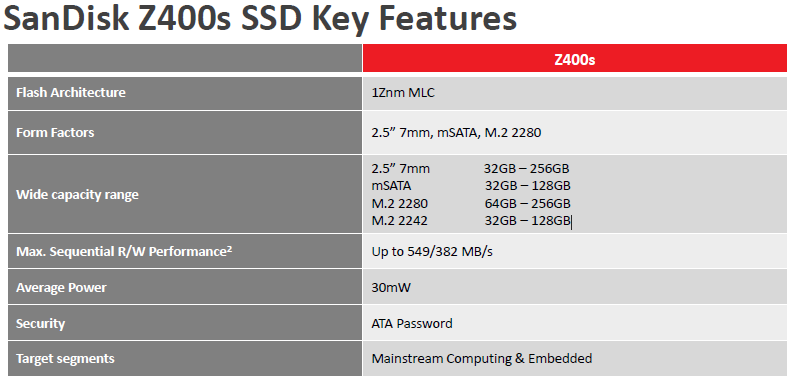SanDisk Brings Z Series SSDs To Mainstream And Embedded Markets
SanDisk claims the new Z400s outperforms hard disk drives by 20x and offers a 5x increase in reliability, all while consuming 20x lower average power consumption. These are common claims for consumer solid state drives, but the Z400s is far from common.
Designed for OEM mainstream PCs and embedded applications, the new Z400s ships in several form factors and capacity sizes to accommodate a wide range of system needs. SanDisk aims to bring price parity with existing hard disk drives by using the company's latest NAND lithography node that reduces the cost of flash.
"The Z400s represents a feat of engineering that addresses the needs of two distinct markets—PC OEM manufacturers and embedded application designers," said Rizwan Ahmed, senior director of product marketing, client platform solutions, SanDisk. "With a single architecture, SanDisk is able to provide OEMs with an affordable solution for displacing HDDs in today's cutting edge consumer devices, and help embedded application designers avoid overpaying for un-needed space—all while delivering the peak performance and high-reliability that only SSDs can supply."
OEM system builders such as ASUS, HP, Dell and Lenovo recognize the virtues of SSDs, but pricing has long been a firewall. The new Z400s is the first client SSD to utilize SanDisk's advanced 15nm process that reduces the cost of the most expensive component in a client SSD. The drive also uses Silicon Motion's new SM2246XT controller that offers high performance without the additional expense of a DRAM buffer. Without DRAM, the Z400s consumes very low power, a key attribute in SanDisk's mobile platform optimization.
The Z400s ships in four form factors and four capacity sizes. SanDisk expects the 32 GB and 64 GB models to gain wide acceptance in embedded markets such as point of sale, digital signage, and security-surveillance systems.
Follow us @tomshardware, on Facebook and on Google+.
Get Tom's Hardware's best news and in-depth reviews, straight to your inbox.

Chris Ramseyer was a senior contributing editor for Tom's Hardware. He tested and reviewed consumer storage.

